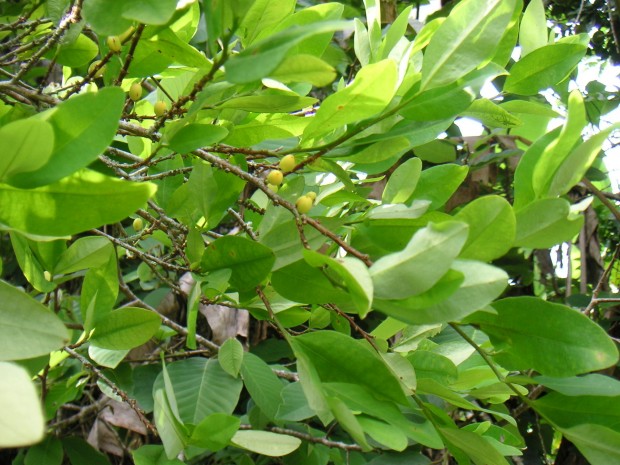In this post more than two years ago, I juxtaposed Colombia’s long-standing and very deliberate efforts to eradicate coca with the more recent policies of the country’s coffee institutions, which I suggested may be contributing unintentionally to the eradication of the traditional coffee varieties that made Colombian coffee famous. The post was inspired by my work on the Borderlands Coffee Project in Nariño, a region known for both coca and coffee.
I spent the better part of last month in Nariño, some of it visiting families that rely on both stimulants for their income. As I reflect now on those visits, it is hard to escape the conclusion that — in Nariño, at least — Colombia’s accidental eradication strategy is succeeding while its intentional one is failing, with implications for the coffee sector.
If data from our Borderlands Coffee Project are any indication, Caturra is disappearing in Nariño. When we polled growers in the region in 2012 on their varietal preferences and attitudes, 24 percent said they planted Caturra the last time they renovated their coffee fields. When we asked what variety they would plant during their next renovation cycle, only 15 percent said Caturra. And 2015 project data suggest that barely 6 percent of coffee planted by participants in our project have chosen Caturra; cultivars resistant to coffee leaf rust, principally Castillo but also the older Colombia variety, represent the vast majority. At this rate, Caturra seems headed quickly toward something close to eradication.
Meantime, if data from the UN Office of Drug Control are any indication, coca production continues to rise in Colombia despite billions of dollars of investment in eradication. And Nariño was again in 2014 the leading coca-producing department in the leading coca-producing country in the world.
What’s it got to do with coffee? This: the coca trade in Colombia continues to lure workers away from the coffee fields.
During one visit last month to a community in Nariño whose central plaza was crawling with Army troops in full battle gear and where a FARC communique was posted on a Borderlands project warehouse, men seemed to be scarce. Why? Many were off harvesting coca rather than home working in their own coffee fields. Harvesting coca can pay $50-$60 a day. A day’s work harvesting coffee, by comparison, may pay just $7 or $8 in Colombia. As long as the coca trade continues to thrive in Nariño, it will contribute to perennial harvest-time labor shortages in the coffeelands.
It may be tempting to think that the coffee sector’s competition for scarce labor with with lucrative if illicit work opportunities makes Nariño an outlier. Sadly, my experience in Mexico, Guatemala, El Salvador and Honduras — where violence, organized crime and the trade in illicit drugs are commonplace in the coffeelands — suggests otherwise.
Michael Sheridan
Michael Sheridan is the Chief Executive Officer of the Coffee Quality Institute, a nonprofit organization with a mission to improve coffee quality and the lives of those who produce it. Sheridan has been leveraging market forces to make coffee work for smallholder farmers and farm workers since 2004. Most recently he directed progressive green coffee sourcing activities and direct-trade partnerships at Intelligentsia Coffee. Prior to that he worked to deliver initiatives in the coffee sector in Central and South America on behalf of Catholic Relief Services.
Comment
2 Comments
Comments are closed.







Street type economics will certainly prevail in the end and you may be correct, but based on exports and field reports, the current 2015/2016 Colombian crop harvest is expected at 13.0 million bags, up sharply from 8.5 in the 2010/11 year. Honduras is also up sharply, i.e., the current crop is expected at 5.9 compared to 3.9 in the 2010/11 year. Mexico, Guatemala and El Salvador production, particularly El Salvador, is, however, down. Like Brazil, growers are also benefiting from a huge decline in their local currency, a dynamic precluding the reduction of production and husbandry.
Phillip:
Thanks for your comment. Indeed, production is up in Colombia and some of the other origins where illicit alternatives to coffee picking are more lucrative, even though they do come with some nasty externalities. I don’t mean to suggest that the labor supply in these origins will collapse, only to add some additional perspective to past writing on the issue of labor scarcity. I suggested on the Coffeelands blog in the past that in countries like Colombia, whose annual growth rates over the past 10-15 years have routinely oustripped those of the United States, Japan and the UK, economic opportunity may mean that laborious and poorly paid work–like farm work–will be less and less attractive. Think about who has performed those functions in the U.S. food system over the past 50 years–overwhelmingly migrants who start at the bottom of the economic ladder. But it is not just the opportunities in the licit economy that coffee farm owners need to be concerned about–the opportunities in the illicit economy have a similar effect in places like Nariño.
Michael
Michael